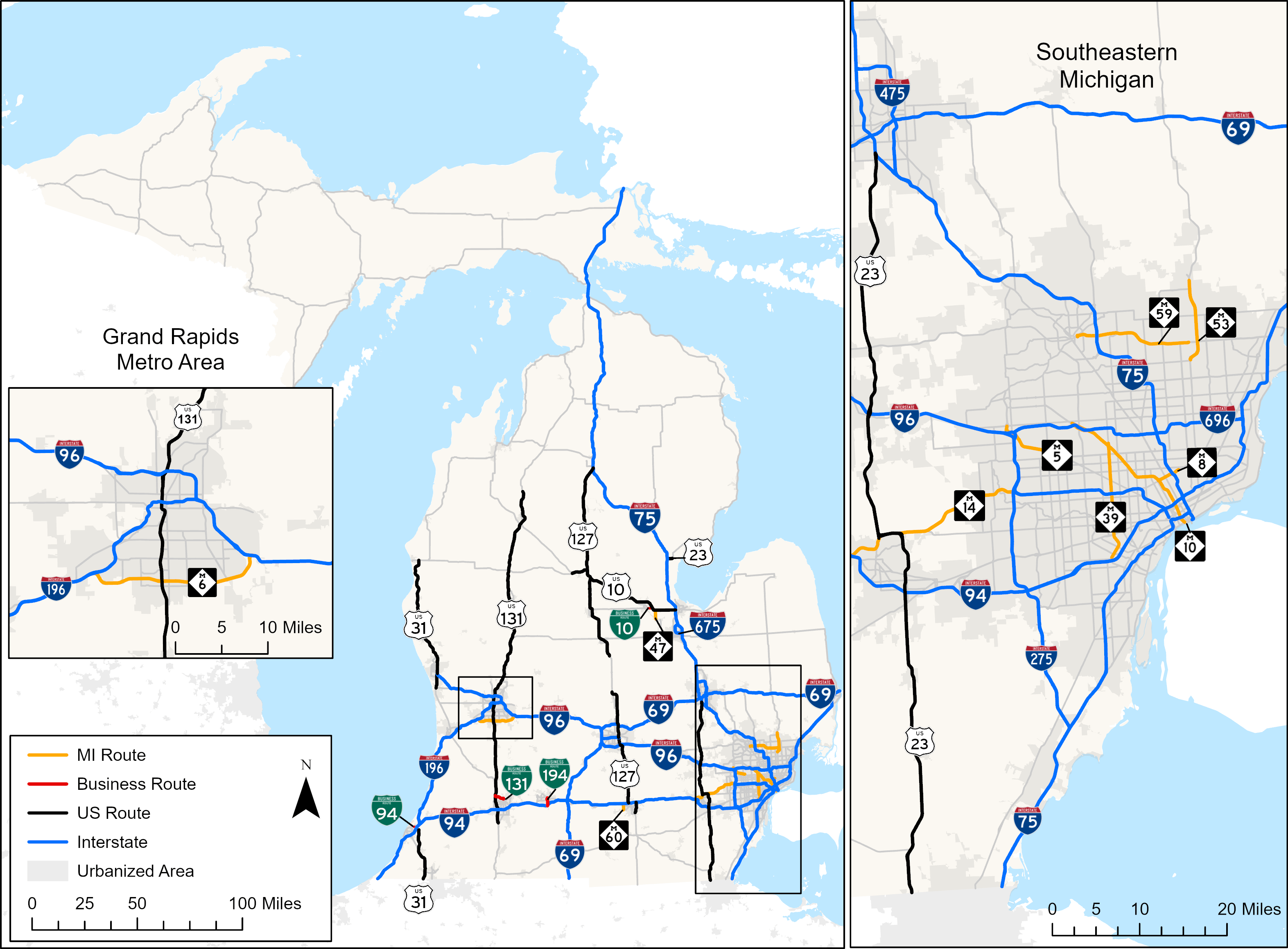Learn More
The Michigan Legislature required MDOT to conduct a tolling feasibility analysis
Public Act 140 of 2020 and Public Act 73 of 2022, required MDOT to hire a consultant to prepare a tolling feasibility analysis and strategic implementation plan for the state of Michigan. Working with HNTB and CDM Smith, MDOT produced the Statewide Tolling Feasibility Analysis and Implementation Plan Reports, which considered the following:
- Evaluated the economic impact and feasibility
- Considered a discount program
- Impact on out-of-state operators
- Applicability for federal tolling programs
- Optimal toll rates
- Identification of required tolling rules
- Long-term financing opportunities
- Identification of candidate corridors
- Identification of how to maximize the use of Michigan workers and products
Michigan tolling feasibility study
Step 1
Feasibility Analysis
The feasibility analysis studied tolling potential and identified the most promising corridors from Michigan's 31 limited-access corridors.
- Completed an initial traffic and revenue evaluation
- Analyzed the corridors using Michigan-specific data (i.e., road and bridge conditions, speed and travel reliability, and socioeconomic data)
- Conducted screening to identify the most promising corridors
Step 1
Step 2
Implementation Plan
Completed the following for the most promising candidate corridors:
- Assessed the feasibility of federal tolling programs
- Refined traffic and revenue evaluation and recommended toll rates and impacts
- Recommended equity and discount programs
- Completed economic and environmental analyses
- Explored financing opportunities
- Set policy and rules
- Updated projects and schedules
Step 3
Recommendations
Step 3
Who conducted this study?
The Michigan Department of Transportation (MDOT) at the request of the Michigan Legislature
Why is tolling being studied?
Michigan Legislation
Transportation infrastructure is vital to Michigan's economy and our way of life, and the costs to improve and maintain existing assets has outpaced available funding. In 2020, the Michigan Legislature required MDOT to evaluate tolls as an additional way to fund Michigan’s highway system.
LEARN MORE ABOUT THE LEGISLATIONNew Technology
The emergence of electric vehicles (EVs) and continued improvements in vehicle fuel efficiency will further reduce the already inadequate transportation revenue obtained through the motor fuel tax. EVs in Michigan pay a vehicle registration surcharge but studies and EV analysis have found this will not fully make up for lost fuel tax revenue. By moving to a more stable revenue source, everyone pays their fair share and it provides an opportunity to prepare Michigan's highway system for future smart infrastructure networks. These innovations offer the prospect of a transport infrastructure system that suffers less congestion, is safer, and can be maintained predictively.
Federal Programs
Currently, there are five federal programs that allow for the implementation of tolling in Michigan. Three of these programs are available today with no additional federal approvals for tolling projects providing:
- New capacity (i.e., new lanes)
- Bridge and tunnel reconstruction
- Conversion of existing high occupancy vehicle (HOV) lanes to high occupancy toll lanes
Modernizing Michigan’s Highway System
Built in the 1950s and 1960s, a significant portion of Michigan’s highway system, including the Interstate system, is approaching the end of its useful life. Maintenance to these roadways consume the greatest share of available existing revenue sources, with very little funding left over to modernize it.
Tolling could provide a dedicated revenue stream that could be used to modernize Michigan’s aging highway system. This dedicated funding to tolled highways would free up other existing funding to further invest in the remainder of MDOT's system.

